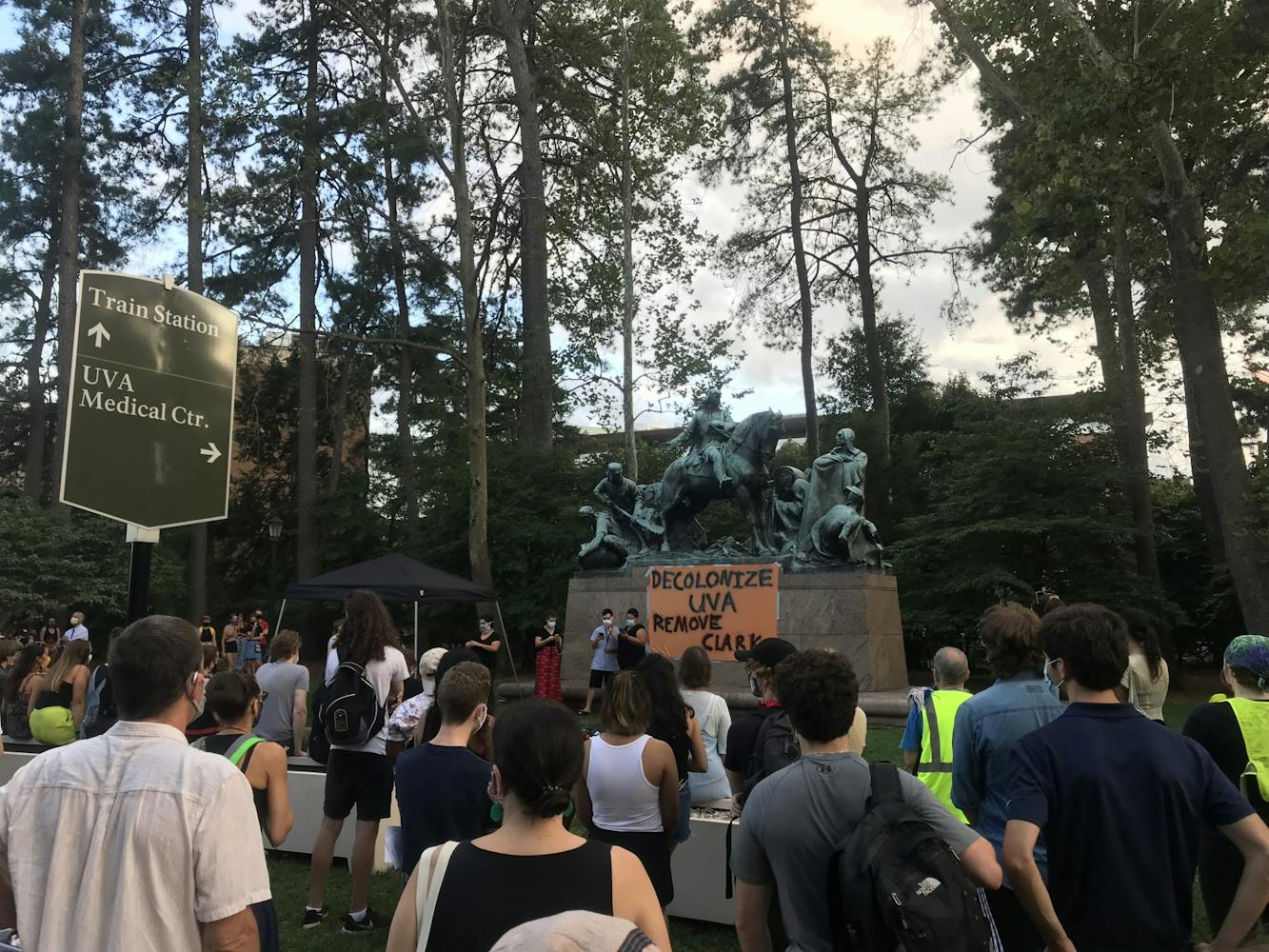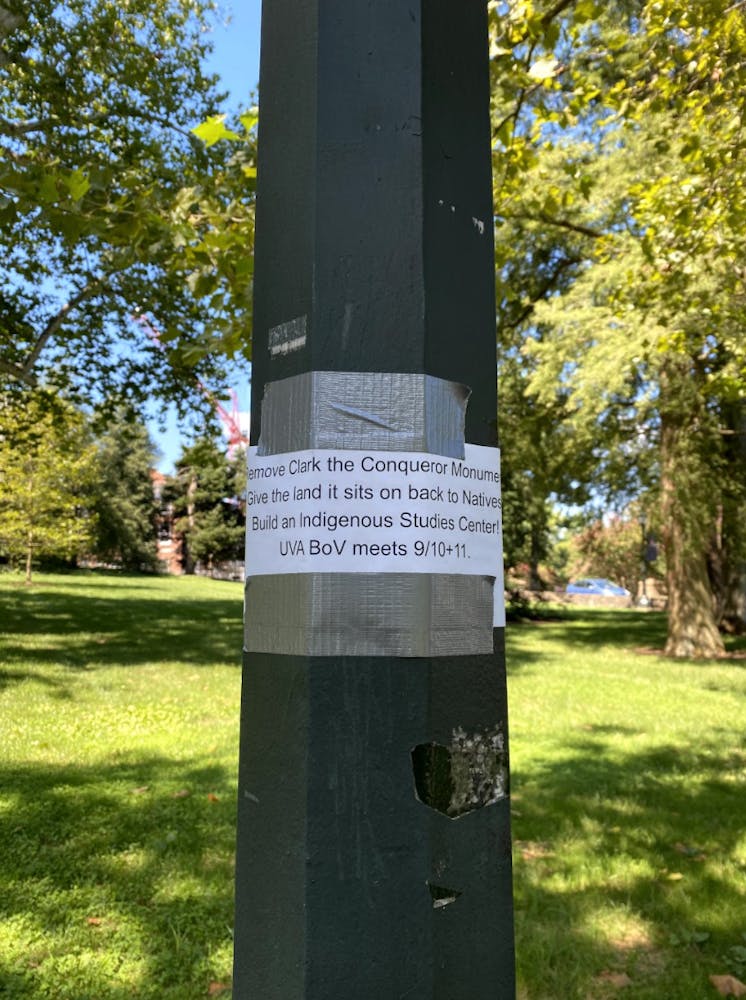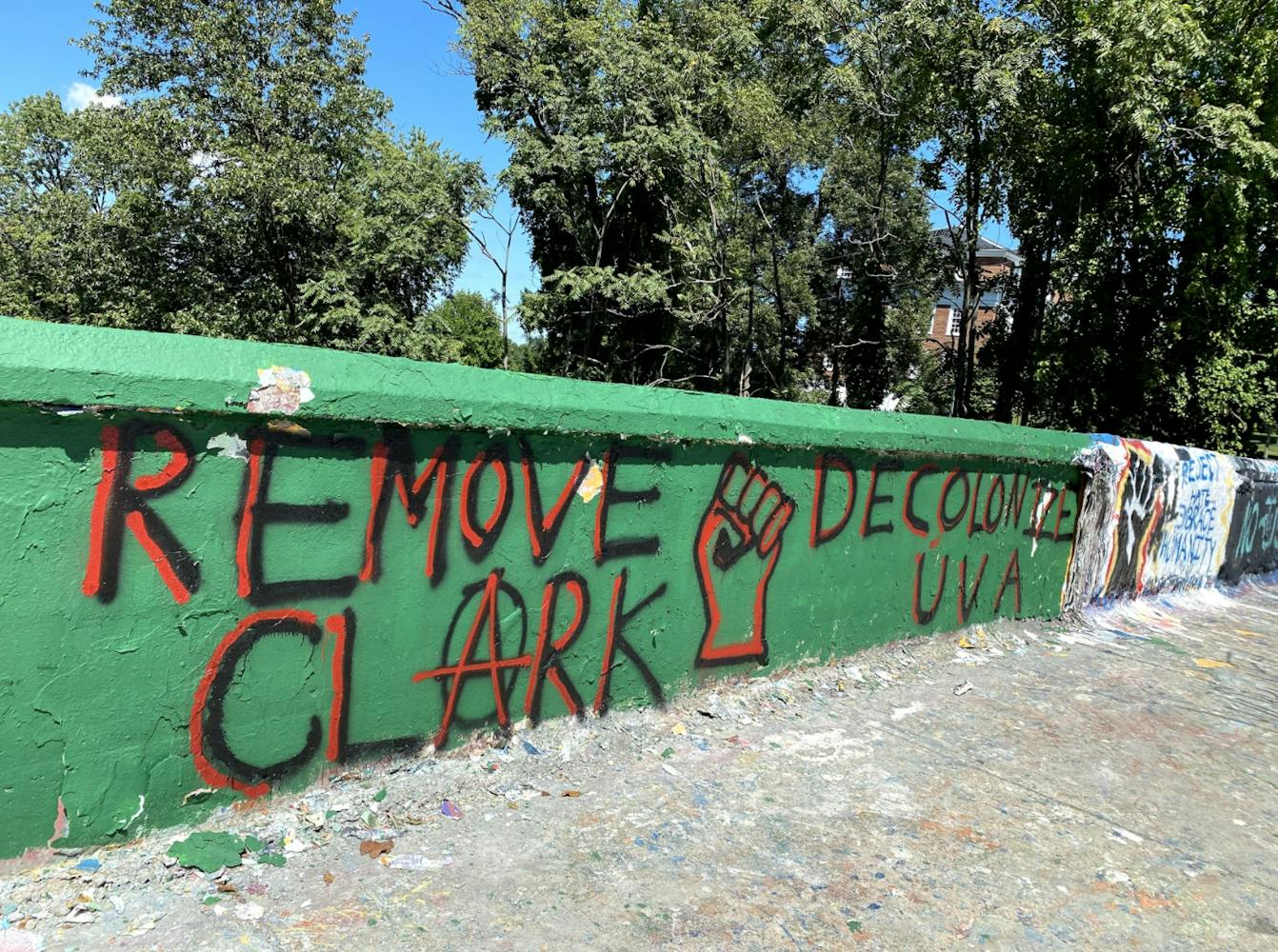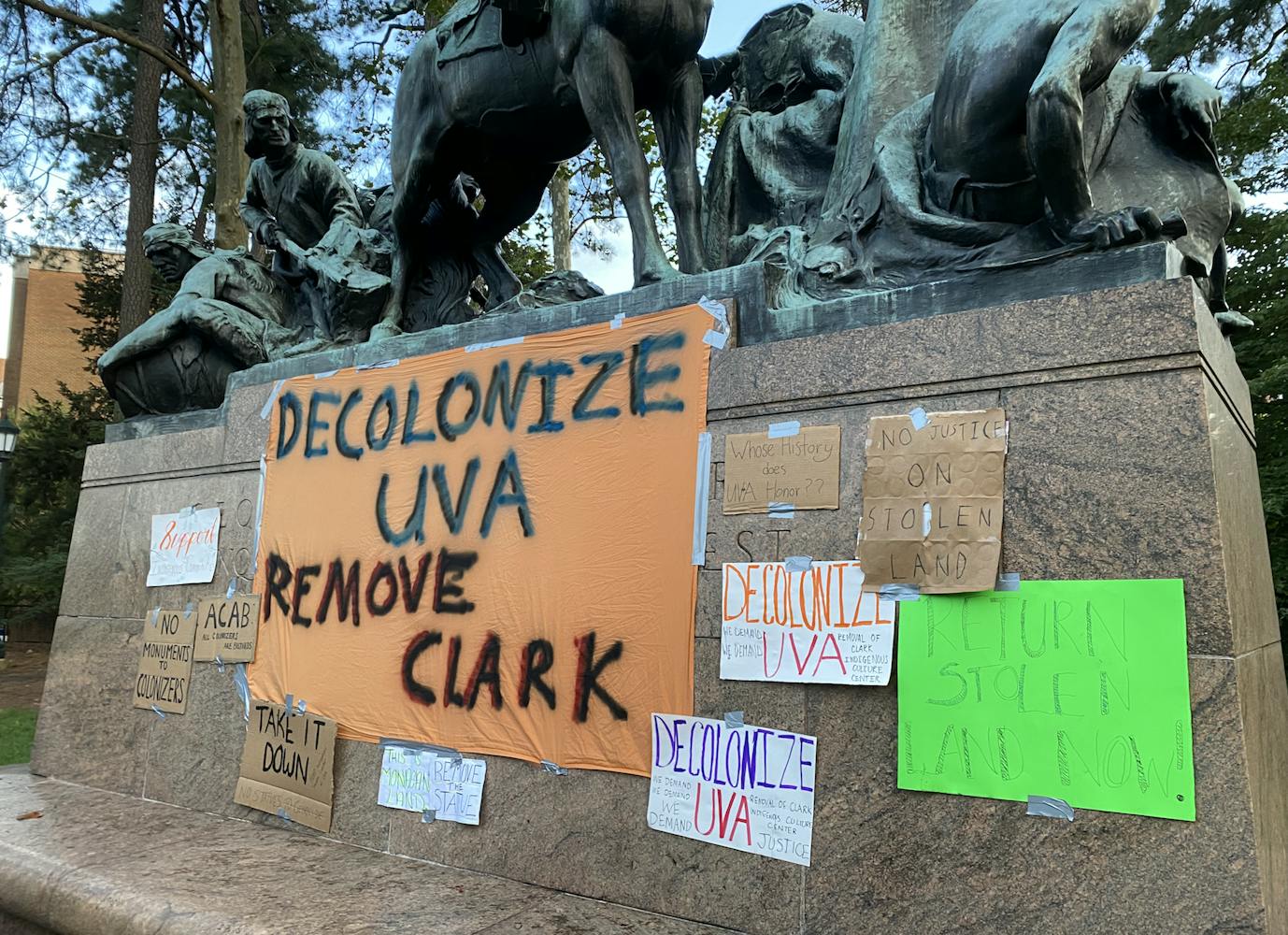Around 100 community members gathered around the University’s George Rogers Clark monument on the Corner Thursday evening in support of various demands put forth by Indigenous community activists. The demonstration came one day before President Jim Ryan and the Board of Visitors are set to discuss Racial Equity Task Force recommendations and the University’s historic landscape.
Along with the removal of the statue, Indigenous activists demand the land be returned to Indigenous control by establishing a U.Va. Native American Foundation, rezoning the area to permit a multistory building and constructing an Indigenous Cultural Center in place of the statue. The organizers also state that the University must take such action with formal consultation from tribal stakeholders and establish a full-time Indigenous liaison office at U.Va.
Demonstrators heard speakers from the University and Charlottesville community communicate the harmful effects of the monument’s symbolism — a depiction of colonial state violence against Native Americans.
The imagery celebrates Clark, who was born in Albemarle County and served as a military officer in the Revolutionary and Northwest Indian Wars, with the title “Conqueror of the Northwest” inscribed on the statue’s base.
Clark is on horseback atop the 99-year-old monument, alongside three fellow armed American soldiers as they confront a group of three Native Americans. A woman cowers away from Clark and covers an infant child, and another member of the party crouches, shielding his face from Clark.
“This is it, this is what we have,” emphasized Anthony Guy Lopez, who spoke at the event and has led efforts to redesign the site as a center for Indigenous Studies.
An enrolled member of the Crow Creek Sioux Tribe in South Dakota, Lopez graduated from the University with a master’s in anthropology in 2009. He has been advocating for removing the Clark statue for almost a decade, is head of the University’s George Rogers Clark Statue Disposition Committee and co-founded the working group for Native American and Indigenous Studies at U.Va.
“And it’s quite a statement, because I thought the University of Virginia was supposed to be a great American university … [but] it has nothing to offer except this to American Indians,” Lopez added. “There’s a huge void here intellectually, but more importantly, it’s a moral void.”
Jalane Schmidt, a community activist and associate professor of religious studies at the University, looked into the history of the Clark statue — which she called a “genocide trophy” — and found the application submitted to the National Register of Historic Places in 1997. She pointed to how the application describes the horse with his ears “laid back to display suspicion and hostility toward the Indians in his path” as supporting evidence for the racist intent behind the statue.
“That’s not what a University is supposed to do,” Schmidt said of the violence depicted in the men the statue celebrates.
Two weeks ago, the Clark statue was found splattered with red paint and damaged near Clark’s neck. Beta Bridge was painted with the words “Remove Clark. Decolonize U.Va.” Around the same time, signs calling for the removal of the “Clark the Conqueror Monument,” the return of the land upon which the statue sits to Natives and the creation of an Indigenous Studies Center were also spotted around Grounds.
Second-year College students Booker Johnson and Paola Linares were both at the rally to support the aforementioned demands.
“I think it’s important to hold space and opportunity for the Indigenous community because I feel like we hear a lot about supporting them, but there [are very few] events that actually put that into action,” Johnson said. “I was really excited about this opportunity to actually show up and directly support the Indigenous community.”
“We always do Indigenous land acknowledgements and things like that … but, like the speaker said, [the Clark statue] is the only thing that Indigenous people have [at the University], and look at what it represents,” Linares added.
The University currently employs only one professor who specializes in Native American studies — Kasey Jernigan, assistant professor of American studies and anthropology — and there are zero tenured Native faculty. According to the University’s diversity dashboard, in 2019 there were 22 Native American or Alaskan undergraduate and graduate students in total.
Schmidt encouraged attendees to email Board Secretary Susan Harris expressing support for the demands. The Board is scheduled to discuss the historic landscape with University leadership during Friday’s full board meeting, as well as the Racial Equity Task Force report submitted to Ryan in August.
In the report, the task force formally recommended that the University remove the Clark statue from the Corner while “working with the local Indigenous community to reimagine what might embody the space where the statue currently stands.” The task force also calls on the University to create a Center for Native American and Indigenous Studies and establish a tribal liaison in an effort to restore Indigenous nations’ platforms.
“U.Va.’s donors are constantly the ones calling the shots,” said Sarandon Elliott, a third-year College student who addressed the crowd as chair of Young Democratic Socialists at U.Va. “Now my question to you all is do U.Va. donors have any benefit in letting us — Black, Brown, Indigenous and working class Americans — build and retain power on this campus?”
Chief Robert Gray of the Pamunkey Indian Tribe authored a letter to Julie Langan, director and state historic preservation officer of the Virginia Department of Historic Resources, supporting the removal of the statue and replacement with an Indigenous studies complex. On Thursday, Lopez shared the letter with Ryan, Board Rector James B. Murray and Vice Provost Louis P. Nelson, noting that the Board’s materials erase the full scope Indigenous consultation on the matter.
“The removal of the GRC Statue should be accompanied by robust tribal consultation and mitigation that would result in the strengthening of the American Indian community's ability to participate in the mission of the University in terms of teaching, research and service,” Lopez wrote.
The Board’s full meeting agenda shows a resolution supporting University efforts to “remove and relocate” the statue, but Lopez is concerned that merely removing the monument — without also committing to active tribal consultation and systemic support for native people at the University — will be “a hollow gesture.”
“They need to fix this problem, not hide it, and not erase it,” Lopez said in an interview with The Cavalier Daily. “Right now, they’re setting it up so they don’t have to do anything else, and that is worrying and disappointing.”
The full meeting of the Board is scheduled to begin at 1:30 p.m on Friday. The Board is meeting in person at Boar’s Head Resort, and members of the public can virtually access a live recording.










